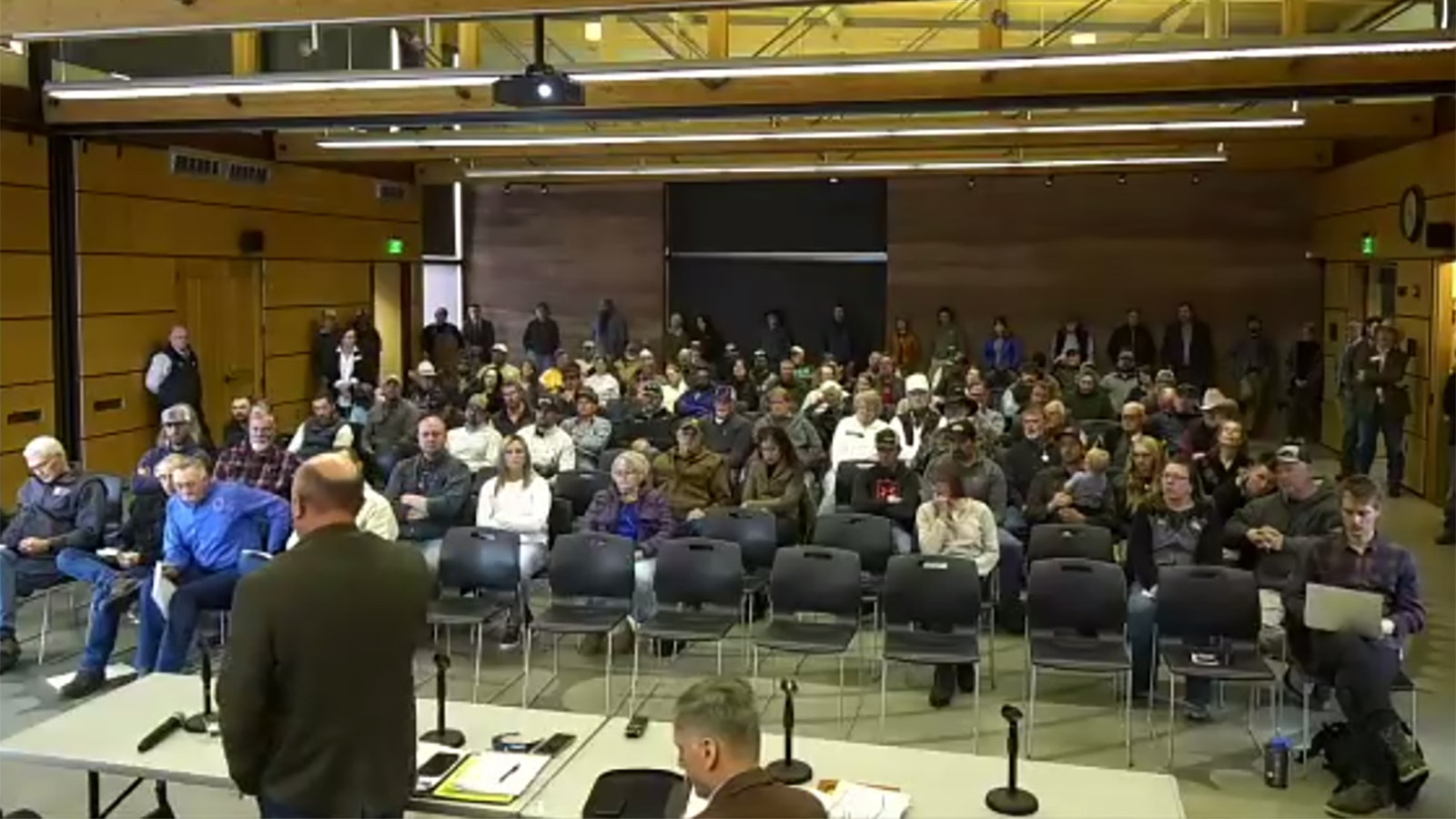Logan Hedges of Star Valley doesn’t think his son will ever get the deer hunting opportunities that he had growing up.
The current brutal winter isn’t the first the Wyoming Range deer herd has faced in recent years, Hedges said during a meeting called Thursday in Pinedale by Gov. Mark Gordon about the grim outlook for wildlife winter kill.
“Boy, it’s looking rough. It’s been looking rough for a while,” Hedges said.
The Wyoming Range herd still hadn’t recovered from previous bad winters – such as those in 2011 and 2017 – when this one hit, he said.
The herd was estimated to be about 30,000 deer after the last count in December, he said, and it’s likely plummeted since.
“We’re going to drop below 20,000 on a herd that used to have 80,000 deer,” he said. “We were already below our objective of 40,000 deer, and that’s a low bar.”
That makes him wonder about how good hunting will be for his son, Hedges said.
Along with others at the meeting, Hedges said he’d be willing to limit, or even entirely give up, hunting for mule deer and antelope this fall because of the devastating effects of this winter, which has already killed thousands of animals across the state.
Double Whammy For Pinedale Antelope Herd
The meeting drew a nearly full house on site in Pinedale, as well as dozens of others joining in from across Wyoming via Zoom. It was hosted by Gordon, Wyoming Game and Fish Department Director Brian Nesvik and wildlife biologist Kevin Monteith, head of the Haub School of Environmental and Natural Resources at the University of Wyoming.
Antelope across the state are struggling to survive as deep, hardpacked snow has cut off their migration routes and made their forage inaccessible, Nesvik said.
And to make matters worse, an outbreak of rare bacterial pneumonia that started killing antelope earlier this year near Pinedale has now killed hundreds of them, and appears to be spreading, he said.
Suspected cases have cropped up in antelope as far away as the Rock Springs area, he said.
The situation for antelope in the Baggs area also remains terrible, Nesvik added. One bright spot is in Unita County, where 80% of the antelope might survive the winter, or close to the average number.
Feeding Not Good Idea
The Game and Fish this winter has been feeding elk hay at numerous sites, mostly in western Wyoming, Nesvik said.
Some at the meeting questioned why that can’t be done for deer and antelope.
Tyler Wilson of Boulder, Wyoming, asked why the state can’t “plow these roads, kick out some hay and feed ’em like we did in the old days?”
That wouldn’t work because the digestive systems of deer and antelope couldn’t quickly adjust to hay or other types of feed the way that elk can, Monteith said.
Nesvik said some surrounding states, such as Utah, have tried feeding deer this winter, but have had mixed results, at best.
Also, the elk aren’t being fed to save them from starvation, because elk generally fare better under harsh conditions than deer and antelope, Nesvik said.
Instead, it’s to keep elk away from ranchers’ haystacks. Elk might tear down fences to raid ranchers feed, and if they get to close to cattle, they can spread disease to the cattle, he said.
Monteith said the best bet for deer and antelope is to go into winter already fat from browsing on their natural foods over the summer and fall.
In that regard, the Wyoming Range mule deer herd at least has as chance, he said. Research this fall indicated that the deer had an average of 12% body fat, compared to only 8 % body fat going into previous hard winters.
Migration Corridors Are Key
In the longer term, some said protecting animals’ habitat and migration corridors will give game herds better chances for winter survival.
Dan Bailey of Bondurant said three large developments in his area already threaten wildlife migration corridors there.
Gordon said conservation easements can encourage land developers to leave room for wildlife migration.
However, “A conservation easement isn’t going to slow down the guy who wants to make a lot of money,” Bailey said.
Even so, the Sublette County Commission recently denied some developments proposed by billionaire Joe Rickets, who owns property there.
Willing To Give Up Hunting
Outdoorsman Paul Ulrich of Pinedale, along with other hunters, said he’d be willing to give up antelope and deer hunting for the next season or two, if that would help.
“We’ve talked as a family, and we’d be in favor of curbing, or even cancelling, deer and antelope hunting in some areas,” Ulrich said. “We love to hunt, and that’s what we do all fall. But for Wyoming’s wildlife population, if it means taking a year or two off, that’s the right thing to do.”
Nesvik said the Wyoming Game and Fish Commission, which sets hunting seasons and regulations, is open to any changes that might be necessary.
However, changes in hunting seasons might not be effective in the long run because it’s healthy fawn production that keeps herds stable or growing, he said.
“We don’t kill very many female mule deer in Wyoming, and bucks can’t have fawns,” he said.
Spring Will Be ‘Glorious’ When It Finally Gets Here
Gordon said other long-term threats to game herds include invasive weed species, such as cheatgrass, and predators.
Regarding the latter, he said his administration plans to keep pursuing efforts to delist grizzly bears.
For the animals that do pull through this winter, food should be plentiful, as the melting snow brings much-needed moisture, Nesvik said.
“When we look across this landscape in this part of the world in May and June, it’s going to look glorious,” he said.





